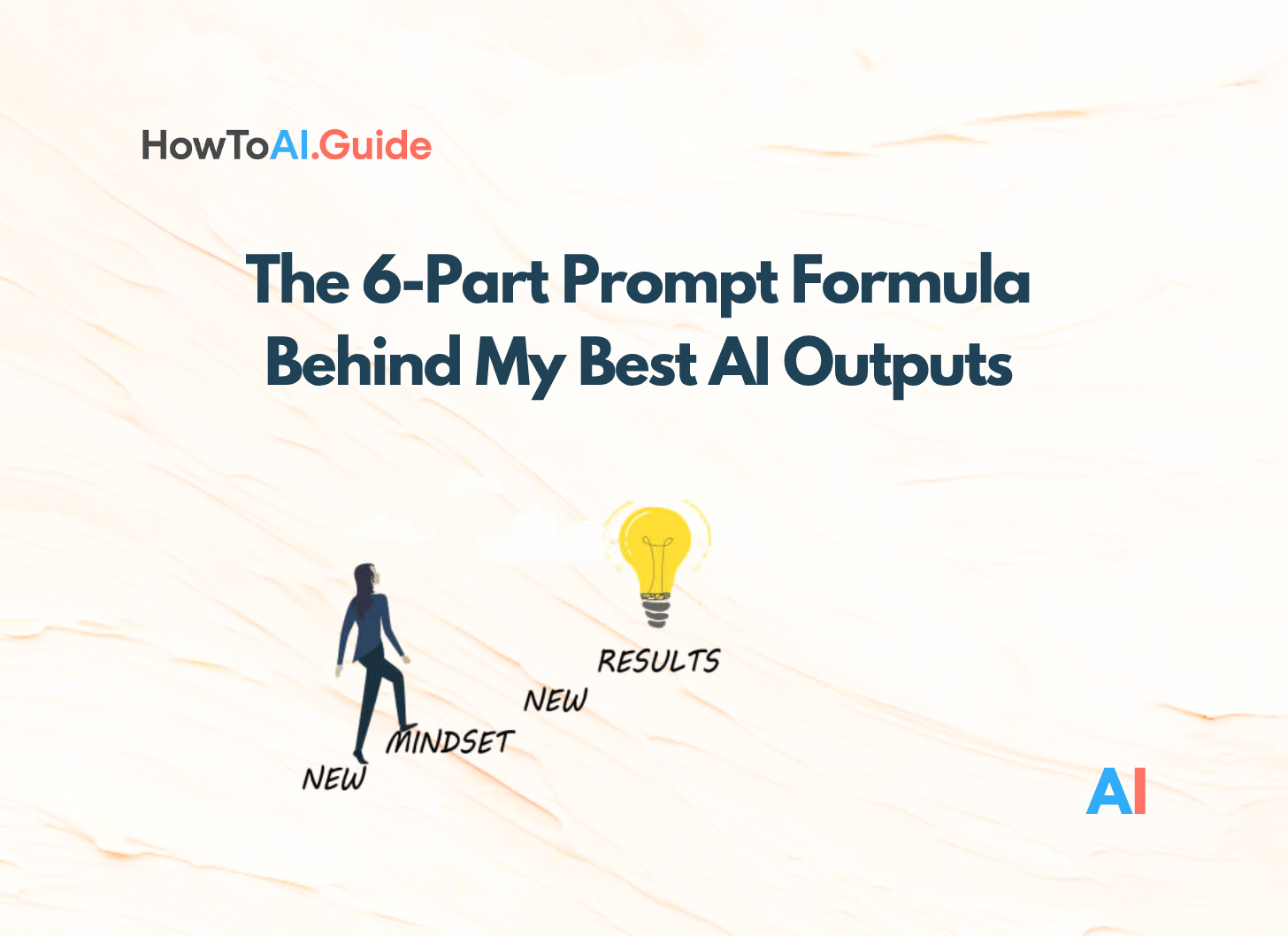The 6-Part Prompt Formula Behind My Best AI Outputs
The core structure I use to turn any idea into a great Prompt.
Most people write prompts like they’re texting a chatbot.
But to unlock LLMs’ full potential?
You need to think like a prompt architect.
That means giving clear roles, outcomes, tone, and structure just like briefing a real teammate.
This guide will show you exactly how to do that with real-world examples and side-by-side comparisons of bad vs great prompts.
A bad prompt wastes your time.
A smart prompt saves it.
Let’s dive in.
What Makes a Good Prompt?
A high-quality prompt is like a smart brief. It gives GPT just enough structure to hit the mark.
Use this simple structure:
Context → What’s the scenario or background?
Role → Who should GPT act as?
(e.g., CEO, Copywriter)Task → What do you want it to do? (e.g., write a thread, summarize a blog)
Format → How should the response look? (e.g., table, list, paragraphs)
Clarify → Any boundaries? (word count, tone, audience)
Refine → Add examples to improve output
This formula helps GPT give human-quality results with way less effort.
What You Need
Any LLM (i.e ChatGPT , Claude or Gemini)
Relaxed mind
One topic you want to explore
▸ Step 1:
Start With a Clear Task
Why: Vague inputs lead to vague outputs.
Bad Prompt:
“Write about productivity.”Good Prompt:
“You are a productivity coach. Write a 200-word LinkedIn post for startup founders on how to structure their mornings. Format it as 5 punchy bullet points.”▸ Step 2:
Assign a Role
Why: Role shifts tone and vocabulary.
Bad Prompt:
“Explain AI to beginners.”Good Prompt:
“Act as a friendly AI teacher. Explain how ChatGPT works to a group of high school students using simple analogies.”▸ Step 3:
Define the Format
Why: Prevents walls of text or scattered ideas.
Bad Prompt:
“Summarize this article.”Good Prompt:
“Summarize the article in 5 bullet points for busy managers. Keep each under 15 words.”▸ Step 4:
Add Context Early
Why: Memory helps, but context guides output instantly.
Prompt:
“We're writing onboarding emails for new Canva users. Our tone is friendly, confident, and encouraging. Now write a welcome email as if you’re a helpful coach.”▸ Step 5:
Give Examples (Optional but Powerful)
Why: Shows GPT what “good” looks like.
Good Example → “Welcome aboard! Here’s how to get started fast.”
Bad Example → “Thank you for registering for our software.”
Now write 3 new variants that match the good tone.▸ Step 6:
Refine & Save What Works
Why: One great prompt can be reused forever.
Save your best prompts in Notion, Google Docs, or anywhere
Version them for different tones (casual, executive, Gen Z)
Create a “prompt vault” for common use cases
Done!
Now You’re Prompting Like a Pro.
Keep this formula in your back pocket:
Context + Role + Task + Format + Clarify + Refine
Use it consistently, and your prompts will work harder than most humans.
Bonus tip: Keep a “best prompts” doc as you go.
You’ll build a personal toolkit you can plug into any AI task.
See you in a few days,
Aniket Chhetri
🤔💭 What’s the biggest mistake you’ve made while prompting AI?
Let’s talk in the comments section below.



